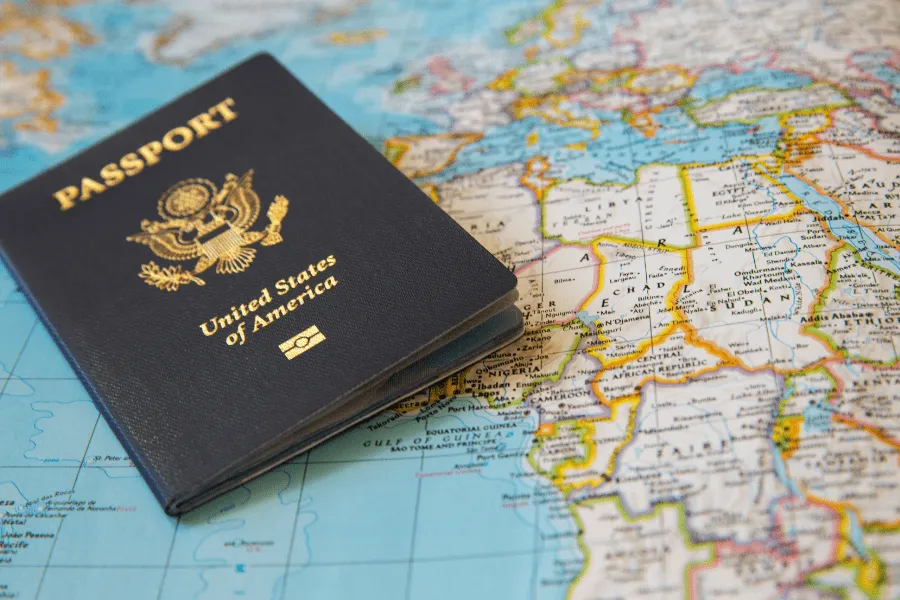As global travel surges in 2025, one trend is standing out: the rising appeal of visa-free countries. For digital nomads, solo travelers, retirees, and families alike, destinations that require little to no pre-approval for entry are becoming go-to favorites.
With easier mobility, faster entry processes, and simplified immigration rules, visa-free travel is now more than just a convenience—it’s driving a major shift in global tourism patterns. Travelers are prioritizing countries where red tape is minimized, entry is streamlined, and stays are more flexible.
From Southeast Asia to the Balkans and the Caribbean, here’s how visa-free destinations are reshaping travel in 2025—and why more people are choosing them.
Why Visa-Free Travel Is on the Rise
The post-pandemic travel boom combined with geopolitical shifts, digital nomadism, and tech-enabled planning tools (like AI travel agents) has led to a surge in independent, spontaneous, and remote-friendly travel.
Key Drivers of Popularity:
- Freedom of movement: Skip consulate visits, paperwork, and long processing times.
- Remote work flexibility: Digital nomads prefer countries where they can enter freely and decide later whether to extend or apply for long-term visas.
- Budget travel: Visa-free countries often appeal to backpackers and low-budget travelers who avoid costly visa fees.
- Short-stay spontaneity: Travelers seeking quick getaways favor destinations that welcome them without hurdles.
- Retiree relocation: Older travelers are choosing visa-free countries for part-time residence and ease of access.

Popular Visa-Free Destinations in 2025
1. Thailand (New Visa-Free Agreements)
Thailand, already a top global destination, has expanded its visa-free access in 2025 to more countries, including several European and Middle Eastern nations. Tourists from over 60 countries can now stay up to 60 days visa-free, making it even more attractive for long vacations or remote work.
Why it’s trending:
- Digital nomad hubs like Chiang Mai and Phuket
- Affordable cost of living
- Strong expat and travel community
- New rail links with neighboring ASEAN countries
2. Albania (Schengen-Free but Europe-Like)
Often dubbed the “budget-friendly Croatia,” Albania is rapidly gaining traction in 2025, especially among American, UK, and Canadian travelers who can enter visa-free for 90 days or more.
Why it’s trending:
- Coastal towns like Saranda and Ksamil rival Greece
- English is widely spoken in tourist areas
- Low cost of living and digital nomad-friendly
- Easy onward travel to Montenegro, Kosovo, and North Macedonia
3. Georgia (365 Days Visa-Free for Many)
Georgia continues to be a darling of digital nomads and long-term travelers. Citizens of over 90 countries—including the US, EU, and UK—can stay visa-free for a full year.
Why it’s trending:
- Free, long-term stays
- Remote work visa not required
- Mountain + city + beach variety
- Tbilisi is a creative tech hub with a growing infrastructure
4. Indonesia (Visa-Free for ASEAN, Simplified for Others)
While full visa-free access remains for ASEAN nations, Indonesia has rolled out a streamlined e-visa and visa-on-arrival system for dozens more countries, making Bali a top pick again in 2025.
Why it’s trending:
- Bali’s return as a wellness and remote work capital
- Co-living communities and affordable villas
- Cultural richness and nature-based retreats
- Easy regional travel to Singapore, Malaysia, and Australia
5. Serbia and the Balkans
Serbia continues to offer visa-free access to many nationalities, including Americans, most Europeans, and several Asian countries. As a non-Schengen country with friendly border policies, Serbia is a perfect gateway for travelers rotating through Europe.
Why it’s trending:
- No EU visa required
- Affordable cities like Belgrade and Novi Sad
- Central location for exploring the Balkans
- Underrated food and nightlife scenes
6. Colombia (Expanding Entry for Tourists)
In Latin America, Colombia is rising fast thanks to improved safety, modern cities like Medellín, and visa-free entry for over 100 nationalities for up to 90 days.
Why it’s trending:
- Vibrant culture and biodiversity
- Remote work-friendly policies
- Direct flights from North America
- Low living costs and café culture
7. Morocco (North Africa’s Gateway)
Many nationalities can enter Morocco without a visa, and in 2025, the country plans to invest in its tourism infrastructure. With high-speed trains, luxury riads, and desert escapes, it’s a perfect balance of exotic and accessible.
Why it’s trending:
- 90-day visa-free access for over 70 countries
- Safe for solo and female travelers
- Growing digital nomad and student communities
- Short flight from Europe, increasing appeal as a winter escape

The Role of Digital Nomads in the Trend
2025 is the year of the “slowmad”—travelers who stay longer in fewer places. Visa-free countries allow digital workers to live fluidly, try out new locations, and extend stays without bureaucratic burdens. Rather than committing to long-term visas or residency permits, they prefer flexible, entry-by-passport access.
Platforms like NomadList, Remote Year, and Hacker Paradise now rank destinations not just by Wi-Fi speed and rent but also by visa freedom.
How Countries Are Competing for Visa-Free Tourists
Governments are now strategically offering visa waivers or simplified entry to attract tourism revenue and remote workers. Visa liberalization is being used as a soft power tool—and in many cases, as an economic stimulus.
Examples of 2025 visa updates:
- Japan extended visa-free stays from 90 to 180 days for several countries.
- Kenya announced visa-free entry for all African nationals and introduced a universal e-visa.
- UAE added more nationalities to its 90-day visa-free list, targeting digital nomads.
This global competition for travelers has created a more open, interconnected world where mobility is easier and borders are (digitally) lighter.
Tech Tools Powering Visa-Free Exploration
AI-powered travel tools like ChatGPT’s custom GPTs, Google’s Gemini Travel, and platforms like TripIt or Hopper are helping travelers:
- Identify visa-free countries based on nationality
- Monitor length-of-stay limits and renewal options
- Book flights based on entry rules and flexibility
- Access entry rules in real time, even while en route
This makes visa-free travel not only more desirable, but also more manageable.
Potential Risks and Considerations
While visa-free travel is attractive, travelers should still stay aware of:
- Length of stay restrictions (e.g., 30, 60, or 90 days)
- Overstay penalties, which can lead to fines or bans
- Limited work rights—most visa-free entries are for tourism, not employment
- Lack of healthcare coverage—ensure travel insurance is in place
It’s also wise to research renewal rules, border runs, or the possibility of switching to long-term digital nomad or retirement visas.
Related Blog: Destination Dupes: Smart Summer Travel Alternatives
Conclusion: A Freer, More Flexible Way to Travel
In 2025, visa-free travel has become a symbol of freedom, spontaneity, and global citizenship. From digital workers testing new cities to retirees seeking winter escapes, more people are choosing destinations where entry doesn’t come with a pile of paperwork.
With expanding visa-free agreements, tech-enhanced travel planning, and a growing emphasis on flexible lifestyles, the global map is opening up in exciting new ways.
For many, the best destination is now the one that says:
“Welcome—no visa required.”
FAQs: Visa-Free Countries in 2025
1. What does “visa-free travel” mean?
Visa-free travel means you can enter a country without needing a visa in advance or upon arrival. You simply show your valid passport and meet entry conditions (like proof of return ticket or funds) to enter and stay for a designated period—often 30, 60, or 90 days.
2. Which countries offer the longest visa-free stays in 2025?
As of 2025, Georgia offers one of the longest visa-free stays, up to 365 days for citizens of over 90 countries. Other popular long-stay options include Thailand (60 days), Colombia (90 days), and Albania (90+ days depending on nationality).
3. Is visa-free travel allowed for remote work or digital nomads?
Visa-free entry is typically intended for tourism only, not for employment. However, many remote workers use visa-free access to test a destination before applying for a formal digital nomad visa if they plan to stay longer or work legally. Always check local labor laws.
4. Can I extend my visa-free stay once I’m in the country?
Some countries allow visa-free stay extensions (like Thailand), while others require you to leave and re-enter (“border runs”). Always check the specific rules for your nationality, as overstaying can lead to fines or bans.




